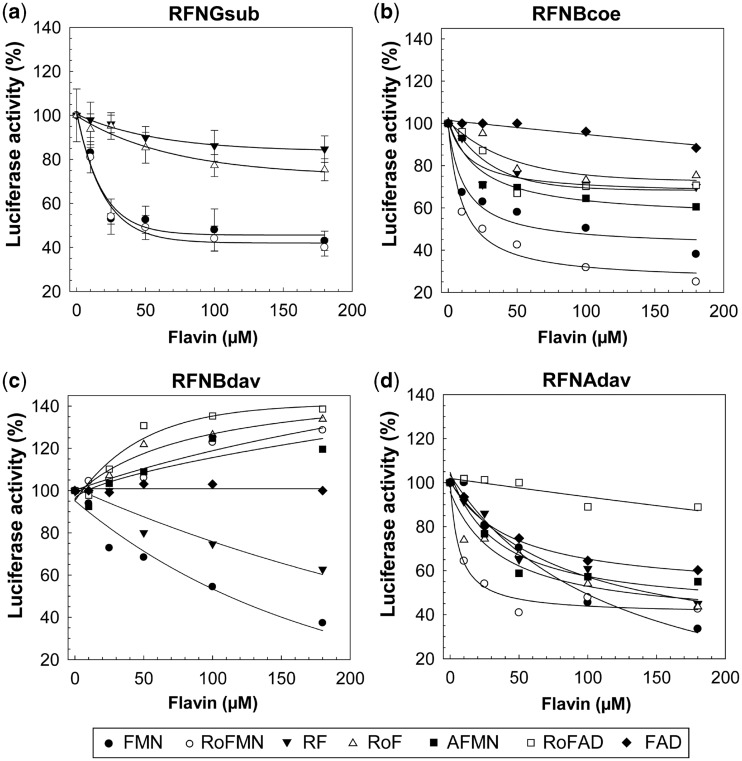Figure 2.
Flavins and their effect on FMN riboswitches. (a) A reporter plasmid producing a transcriptional fusion of the ribG FMN riboswitch of Bacillus subtilis, and the reporter gene luc (coding for firefly luciferase) was used as a DNA template for an in vitro transcription/translation assay driven by RNA polymerase of bacteriophage T7 (Supplementary Figure S2a). The addition of FMN resulted in less activity of Luc indicating that less luc transcript was produced. RoFMN had a very similar effect. The addition of riboflavin or roseoflavin also resulted in reduced luciferase activity; however, the effect was less pronounced. (b) and (c) Reporter plasmids producing translational luc fusions (Supplementary Figure S2b) of the ribB FMN riboswitches of S. coelicolor (b, RFNBcoe) and S. davawensis (c, RFNBdav) were used as templates for in vitro transcription/translation assays as in (a). Most importantly, in contrast to RFNBdav (c), RFNBcoe (b) was negatively affected by RoFMN. A genome-wide screen for FMN riboswitches in S. davawensis identified a second (ribA) FMN riboswitch (Supplementary Figure S3) controlling a gene cluster with unknown function. The activity of the ribA FMN riboswitch (RFNAdav, d) was tested as described earlier. RFNAdav (in contrast to RFNBdav) was found to be negatively affected by RoFMN. Mean values of three independent experiments are shown. For clarity, standard deviations (SDs) are shown in (a) only.

